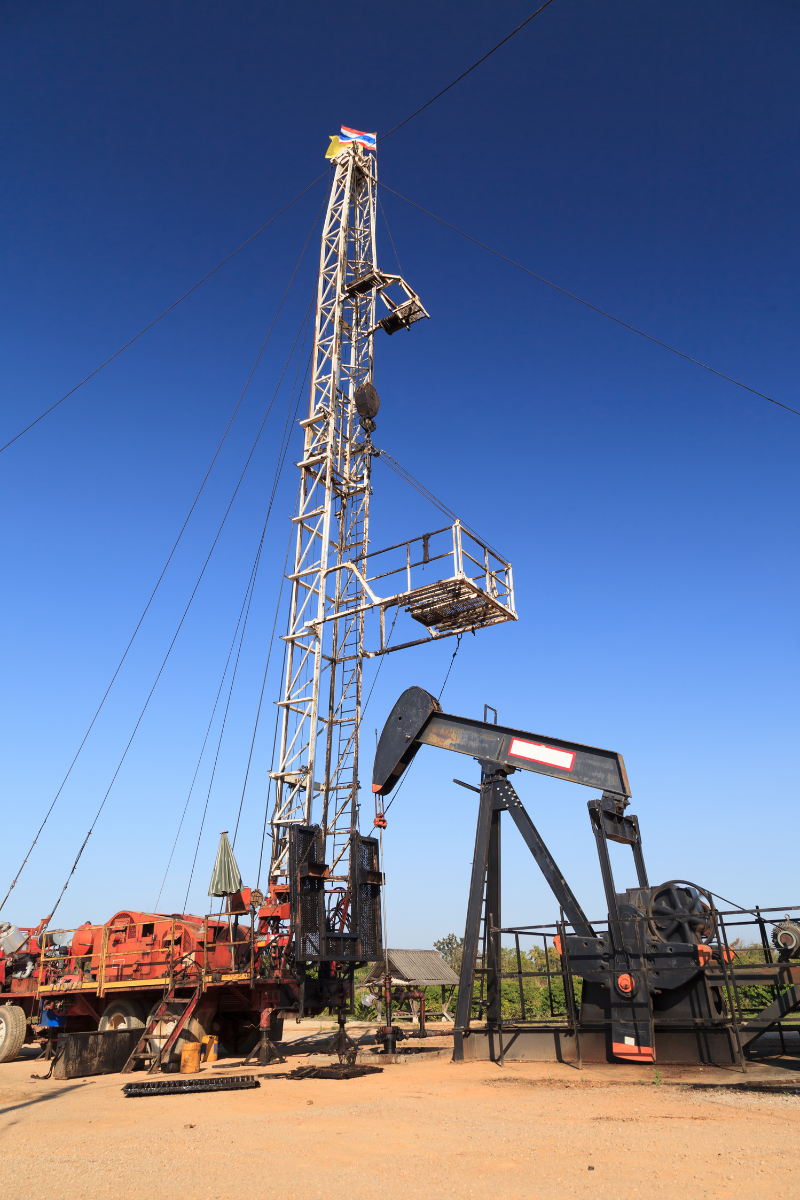You may see that one or more of the wells on your property is listed as “shut-in” or “plugged and abandoned” on the state oil & gas commission website and wonder what this means for your future royalties. In this episode, we explain some of the main reasons wells can end up getting shut-in and whether they can be restarted. We also explore scenarios where an operator may re-enter a previously abandoned wellbore instead of drilling an entirely new well.
Be sure to also subscribe on Apple Podcasts via the link above and please leave us an honest rating and review. We read every one of them and sincerely appreciate any feedback you have. To ask us a question to be featured on an upcoming episode, please leave a comment below or send an email to feedback@mineralrightspodcast.com.
When Wells Get Temporarily Shut-In
Low commodity prices can be a reason operators decide to shut-in production to reduce oversupply and allow prices to recover. Infrastructure limitations like pipeline capacity issues can also necessitate temporary shut-ins. Operational issues such as equipment failures, well integrity problems, or buildup of water/wax may require wells to be shut-in for maintenance.
The Process of Restarting Shut-In Wells
For short shut-in periods, restarting can be simple – e.g. just reopening valves. After longer periods, steps like removing built-up water may be needed. Crews and specialized equipment are required, so there are limits on how fast many wells can be restarted. But in most cases, shut-in wells can be brought back into production when the original issue is resolved. In some cases, if the well is shut-in for an extended period of time it can cause issues with the formation and future oil & gas recovery.
When Wells Get Permanently Plugged & Abandoned
Wells often get plugged and abandoned due to depleted reserves making further production uneconomic. Or sometimes well integrity issues are too costly to fix for the remaining reserves. Plugging and abandonment is a more final decommissioning process.
Potential for Re-Entering Plugged Wells
While more difficult, it can make sense to re-enter an old plugged well in some cases. Reasons include accessing a new reservoir zone using the existing wellbore or if hydraulicly fracturing (frac’ing) or other technology advancements make remaining reserves newly viable. Keep in mind that operators must get approval and will have to demonstrate acceptable integrity of the existing wellbore before re-entering a plugged well. This will involve a cost-benefit analysis to determine if it makes sense to re-enter a well or drill an entirely new one.
The Key Takeaway
When a well is shut-in it is usually just temporary, and those wells can likely be restarted when the right conditions allow. This might be when commodity prices recover or when takeaway capacity constraints are addressed. Plugging and abandonment is usually final, but re-entering remains an option to evaluate based on costs, risks, and potential reserves.
Resources Mentioned in this Episode
- Plugging and Abandonment of Oil and Gas Wells
- A Forgotten Oil Well Births a 100-Foot Geyser in West Texas
- MRP 53: Negative Royalties and What to Do When Your Well Gets Shut-in
- MRP 57: What to do When Your Wells Get Shut-in
- MRP 144: Solutions to the Orphan Wells Problem
- MRP 145: Abandoned and Orphan Wells with Professor Jim Crompton
- MRP 213: What Mineral Owners Need to Know about Well Plugging and Abandonment
Thanks for Listening!
To share your thoughts:
- Leave a comment or question below (we read each one and your question may be featured in a future episode)!
- Ask a question or leave us feedback via email.
To help out the show:
Click the Apple Podcasts Logo Above to leave us a rating & review. It really helps us reach those that need to hear this information and only takes a minute. We greatly appreciate it! Plus, you can get a shout out on a future episode!
Thanks again – until next time!



